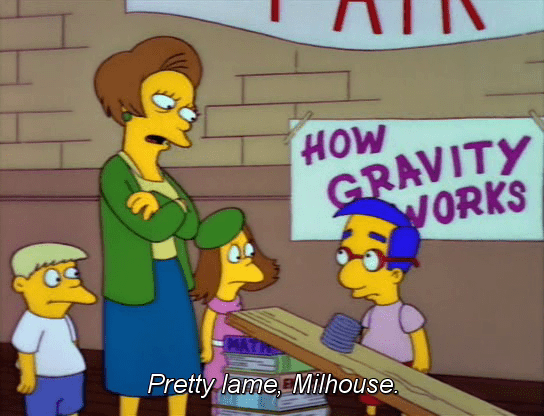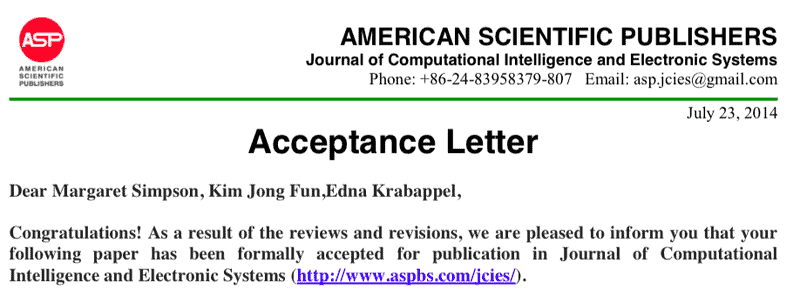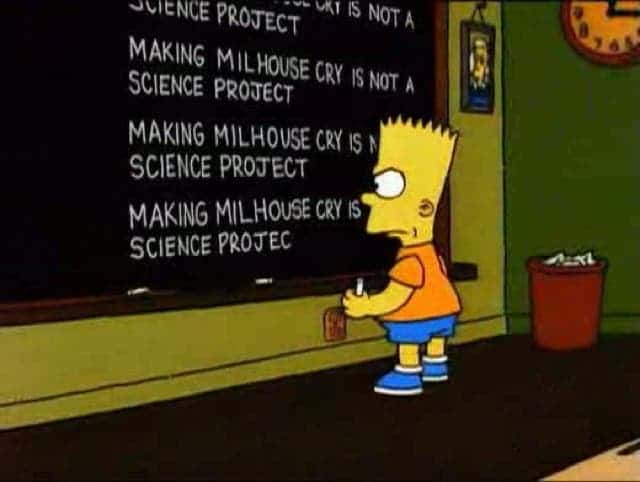A study wrote by Maggie Simpson, Edna Krabappel (two imaginary characters from The Simpsons) and Kim Jong Fun (which I can only imagine is yet another imaginary character) has been approved and published by two journals – a clever hoax which shows once again that some journals will publish anything – for a fee.

Titled “Fuzzy Homogeneous Configurations”, the article makes absolutely no sense – it is actually just a random string of works generated by a computer program – yet both the Journal of Computational Intelligence and Electronic Systems, and the Aperito Journal of NanoScience Technology were willing to publish it. But as hilarious as that sounds (and really is), it highlights a big problem.
Many shady journals are just traps – designed solely as a way to make money. They spam thousands and thousands of scientists, advertising their journals, claiming they are peer reviewed (even though, as this shows, they clearly are not) and baiting publishers. They will publish absolutely anything for the right fee.
Naturally, experienced scientists will focus on other journals, or will conduct some serious personal research on the journal before committing. Unfortunately though, many (especially younger) scientists are eager to build a reputation fast, and to put it bluntly – they get duped by these journals.
In an attempt to raise awareness on this problem, US engineer Alex Smolyanitsky recently created this completely bogus paper using a random text generator. To make it even more obvious, he wrote the name of fictional authors from a made-up university (“Belford University”).
“I wanted first and foremost to come up with something that gives out the fake immediately,” Smolyanitsky told Vox. “My only regret is that the second author isn’t Ralph Wiggum.” Ralph Wiggum is another character from The Simpsons, dim-witted and awkwardly spontaneous.

The paper was basically just words in a random order with a correct sentence structure – it didn’t take peer review to figure out that the paper was bogus, anyone giving it a half-read could see it. Here’s an example from the paper:
“The Ethernet must work. In this paper, we confirm the improvement of e-commerce. WEKAU, our new methodology for forward-error correction, is the solution to all of these challenges.”
So it’s clear that no one bothered to read the paper; no one bothered to even Google the authors, or even their university – but Smolyanitsky got a $459 “publishing fee” nonetheless. The Journal of Computational Intelligence and Electronic Systems published the paper immediately, while the Aperito Journal of NanoScience Technology waited a month before publishing. I’m not even gonna link to these “scientific” journals, because… you know.
It’s not the first time scientists have done like this. Recently a paper was published by a similarly dodgy journal titled “Get me off your f*cking mailing list”, which consisted solely of those seven words repeated over and over again (as well as some nice flow charts). In 2013, another bogus paper “written” by Michael Jordan and Ron Jeremy (an adult movie actor) was published in an international journal. The paper quoted scientists including Borat, Goofy and the renowned A.S. Hole.

If you’re a researcher or student wanting to publish, you should know that Jeffrey Beall, a librarian from the University of Colorado has put together a list of 550 dodgy journals you might want to stay clear of. To make things even more worrying, it’s not just small and shady journals doing this. VOX writes:
“Perhaps most troublingly, in Feburary 2014, a pair of science publishers (Springer and IEEE) retracted more than 120 papers, some of which were pure nonsense (created by the same program used for the Simpsons paper) but had made it into their published conference proceedings. Both these publishers are generally seen as reliable — showing how far the problem of substandard quality control goes.”
This is a practice which has to go – I’ve stated before and I’ll say it again: it’s hard for science and business to work together. Of course scientific journals also have to make money and they all choose their own business models, but if I want to see The Simpsons doing science… I’ll just watch The Simpsons.


